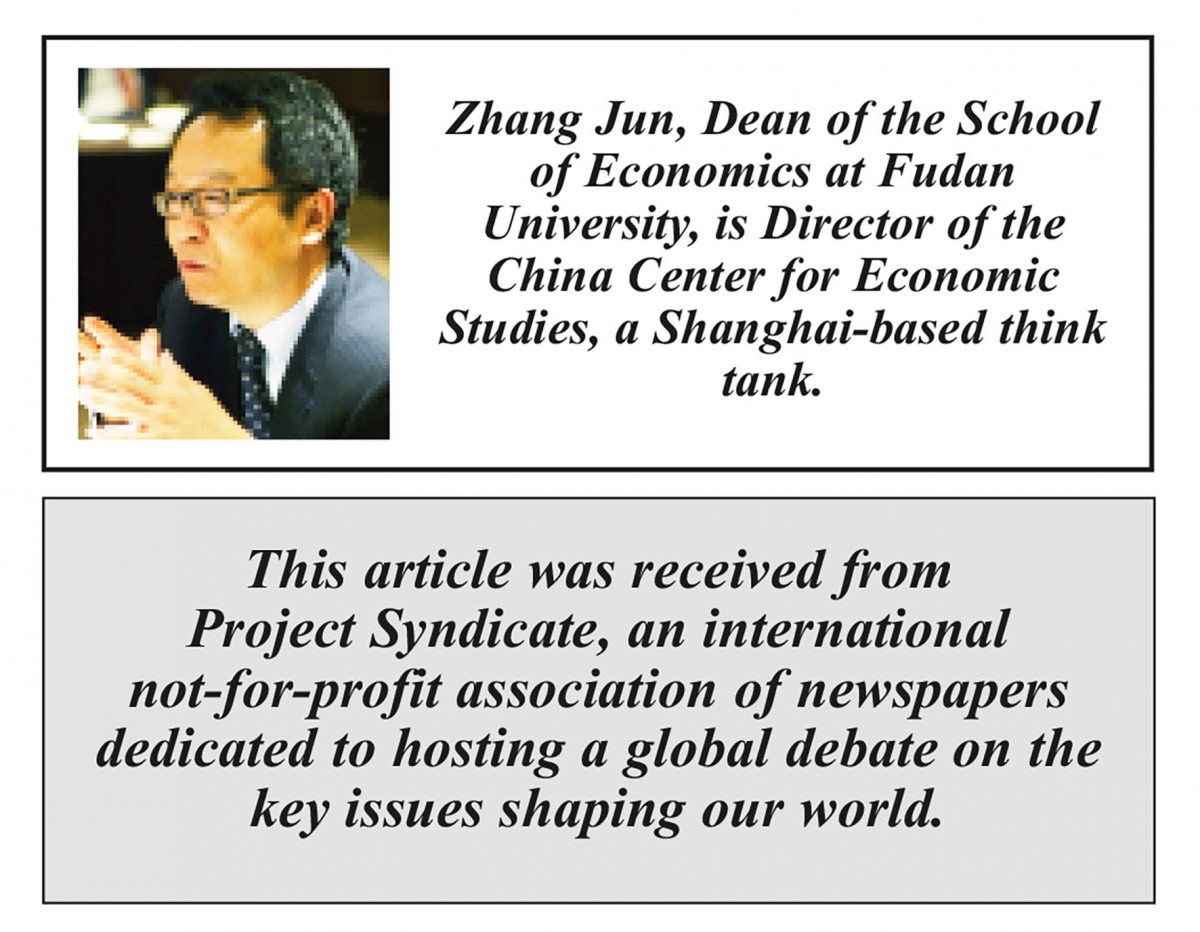SHANGHAI – It has become increasingly clear in recent years that China has begun to shift away from its export-driven economic-development model to an “internal circulation” strategy that emphasizes expansion of domestic demand. Though this seems like a natural step, creating a domestic market large enough for a country of 1.4 billion people has proven to be a more complicated undertaking than many economists and analysts anticipated.
Over the past few decades, China’s economic growth depended heavily on manufacturing exports and capital investment. Between the 1990s and the early 2010s, the country’s successful export-promotion strategy facilitated China’s integration into the global economy and fueled rapid development. While China did not abandon the strategy of import substitution during this period, its “outward-oriented” approach combined “go global” and “bring in” strategies to attract foreign investment, foster joint ventures, focus on labor-intensive exports, and amass huge foreign-exchange reserves.
China’s vast size has enabled it to solidify its position as the world’s manufacturing hub. But its remarkably successful growth model is yielding diminishing returns. Over the past decade, China has experienced a profound demographic shift akin to those previously seen in Japan and South Korea. Alongside a rapidly declining birth rate, the generation born during the baby boom of the 1960s and 1970s – a key pillar of China’s rapid growth since the 1980s – is now approaching retirement, with roughly 20 million people expected to exit the labor force annually over the next decade. The combined effects of population aging and the one-child policy (which was abolished in 2016, after 36 years) have resulted in increased household savings, complicating China’s efforts to boost domestic consumption.
Crucially, China’s enduring commitment to the export-promotion strategy has slowed the development of the domestic market much more than expected. To maintain the country’s competitive edge, the export model requires state interventions in pricing, including reduced land rent, favorable exchange rates, and slower wage growth. Despite China’s massive foreign-exchange reserves, the government maintains its exchange-rate mechanism, which benefits exports but hinders the growth of a vibrant domestic market.
A similar dynamic is evident in China’s interest-rate policy. Real interest rates in China have remained below the GDP growth rate for a long time, resulting in capital misallocation and the absence of adjustment mechanisms to balance investment and consumption.
Wage rates, too, have been affected by the last vestiges of China’s planned economy. The government’s efforts to strike a balance between low wages and affordable prices are a prime example. Although labor compensation has increased as a share of GDP just in recent years, average wages remain significantly lower than in most countries at a comparable income level. Excessive government intervention has resulted in segmented labor markets and an underdeveloped employment system. Consequently, China lacks an adjustment mechanism that aligns wages with the pace of productivity and economic growth.
Moreover, government spending has long been skewed toward physical infrastructure development and capital formation, with only limited funds allocated to supporting households or expanding social-welfare programs. This is why Chinese families maintain high levels of precautionary savings.
To facilitate robust domestic circulation, China must shift away from its export-centric model and focus on import promotion. As a major global player, it is crucial to maintain strategic neutrality while pivoting to such a model, which requires the continuous development of the huge domestic market.
While import promotion is arguably a natural next step for any country that has achieved early success through export promotion, it is particularly crucial for large economies. Central to this shift is the recognition that an economy cannot rely indefinitely on exports to boost growth and improve living standards. By adopting an import-centric strategy, China could address its long-standing trade imbalances and adjust the interventionist mechanisms that have historically affected exchange rates, interest rates, and wage formation. Aligning wage growth with nominal GDP would boost household incomes and stimulate the rapid expansion of China’s service sector, which had previously been constrained by the authorities’ export-driven approach.
Moreover, by promoting imports through currency appreciation and tariff reductions, China could reduce the price of imported consumer goods and dramatically increase household spending. Raising real interest rates would prevent capital misallocation, reduce investment’s share of GDP, and enable the economy to rebalance aggregate demand. Most importantly, by enabling the government to break the cycle of heavy investment and debt, this transition would free up more budgetary resources to meet citizens’ needs and minimize the heavy burden on households struggling to pay for health care, childcare, and education while saving for retirement.
Import promotion holds the key to realizing the potential of China’s domestic consumption demand. Unlike import substitution, this strategy does not stifle the tradable sector. On the contrary, expanding the domestic market and fostering internal circulation would enable Chinese companies to focus on technological innovation and develop the technical skills and know-how required to export more complex, high-value-added products.
Japan and South Korea offer a cautionary tale. While Japan paid a heavy price for delaying its strategic adjustment, South Korea’s rapid economic development between 1987 and 1996 was facilitated by policy adjustments that aligned wages with productivity growth, thereby boosting domestic consumption. But South Korea failed to build on this momentum before a wave of financial liberalization altered its economic trajectory. By heeding the lessons of other East Asian economies, China could avoid a similar fate, rebalance its economy, and achieve sustainable growth.
Copyright: Project Syndicate, 2023.






